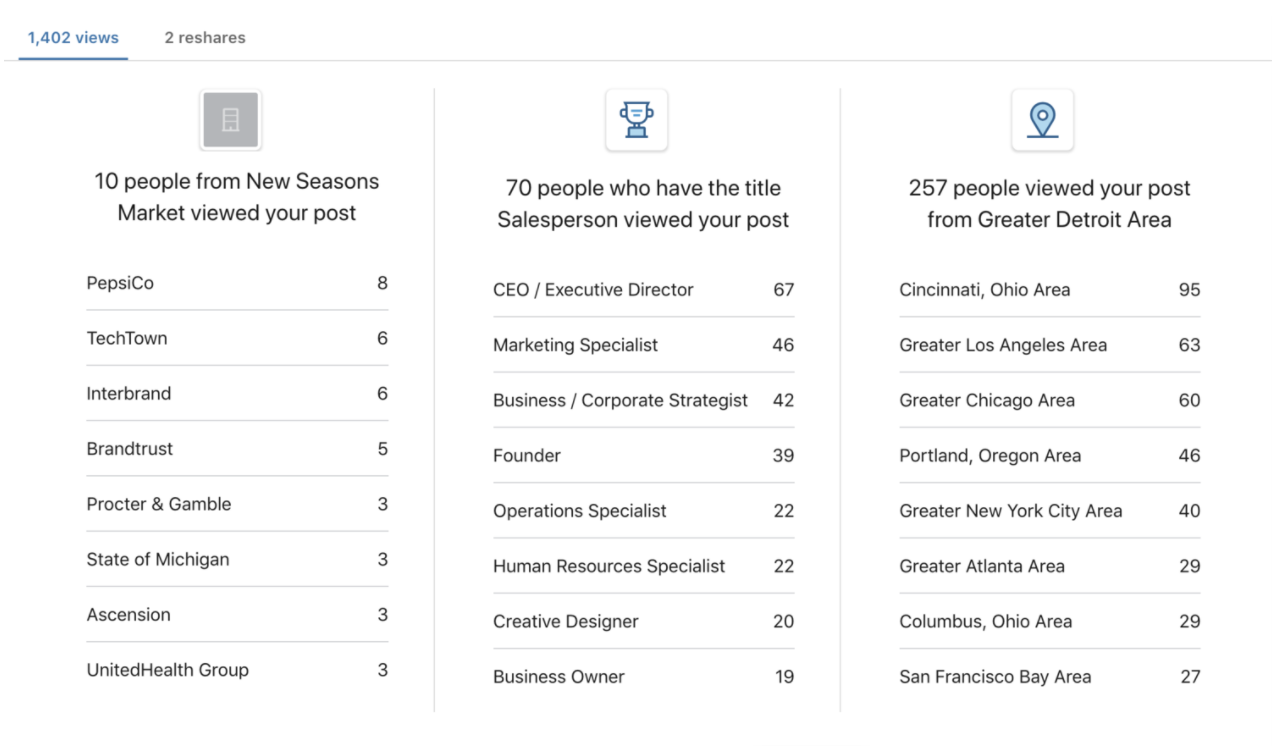Letting "Culture IS Strategy" Really Seep In
By Mary Aviles
In his book, This Is Marketing, Seth Godin postulates that,
“Culture beats strategy—so much that culture IS strategy.”
I shared the image above on LinkedIn and it received 1,402 views—the most reach of anything I’ve ever shared on LinkedIn. So, it’s not just me, right? This is a big idea. And, I know it’s not exactly new. But, something about seeing it on the page like that commanded my attention so much that I can’t stop turning it over in my mind.
A screen capture that reflects the analytics on this particular LinkedIn post.
I keep thinking about HOW to embrace that idea as central to my work.
For my client projects it makes sense. I know what to advise them.
I have been struggling to figure out how to internalize this idea to my consulting practice.
Incidentally, Seth was kind enough to elaborate on his thinking for me. I received a reviewer’s copy of his book and thus access to The Marketing Seminar platform where I’ve been able to interact with others about marketing topics. When I asked for elaboration Seth replied,
what’s the corporate culture at walmart vs amazon? how about the community culture in Lackawanna compared to Dumbo?
these invisible decisions, piled on one another, add up to the water that the fish can’t see… but they’re far more powerful than any edict or strategy someone can dream up…
so we should build our culture with intention, right?
And, then, like an itch that’s finally been properly scratched, in this week’s Marketing News, Russ Klein provided another breadcrumb,
“Culture is what creates the institutional context that marketers must understand as the first step to any business or marketing plan…”
Now, the next step is how to signal this—beyond just making a statement of competitive differentiation—through the everyday experiences I share with clients. To that effect, I'm fascinated by the idea of a signature element as explained in this article from a previous Marketing News. Some examples of iconic brands and their elements include:
Nike Air Max - air bubble
Girl Scouts - (empowering) girls
Through the lens of culture as strategy, the Amazon example in the article is particularly compelling. Their signature element is 1-Click shopping, which is operational in nature. But, they’ve committed to such an extent that this operational practice has become their strategy. As a result, their signature element has evolved into owning the idea of "no patience required."
Especially for those service providers among you, what is your signature element? If you don’t have one, what could you do operationally to signal your strategy? What do you do to understand your clients’ and your own cultural context?


